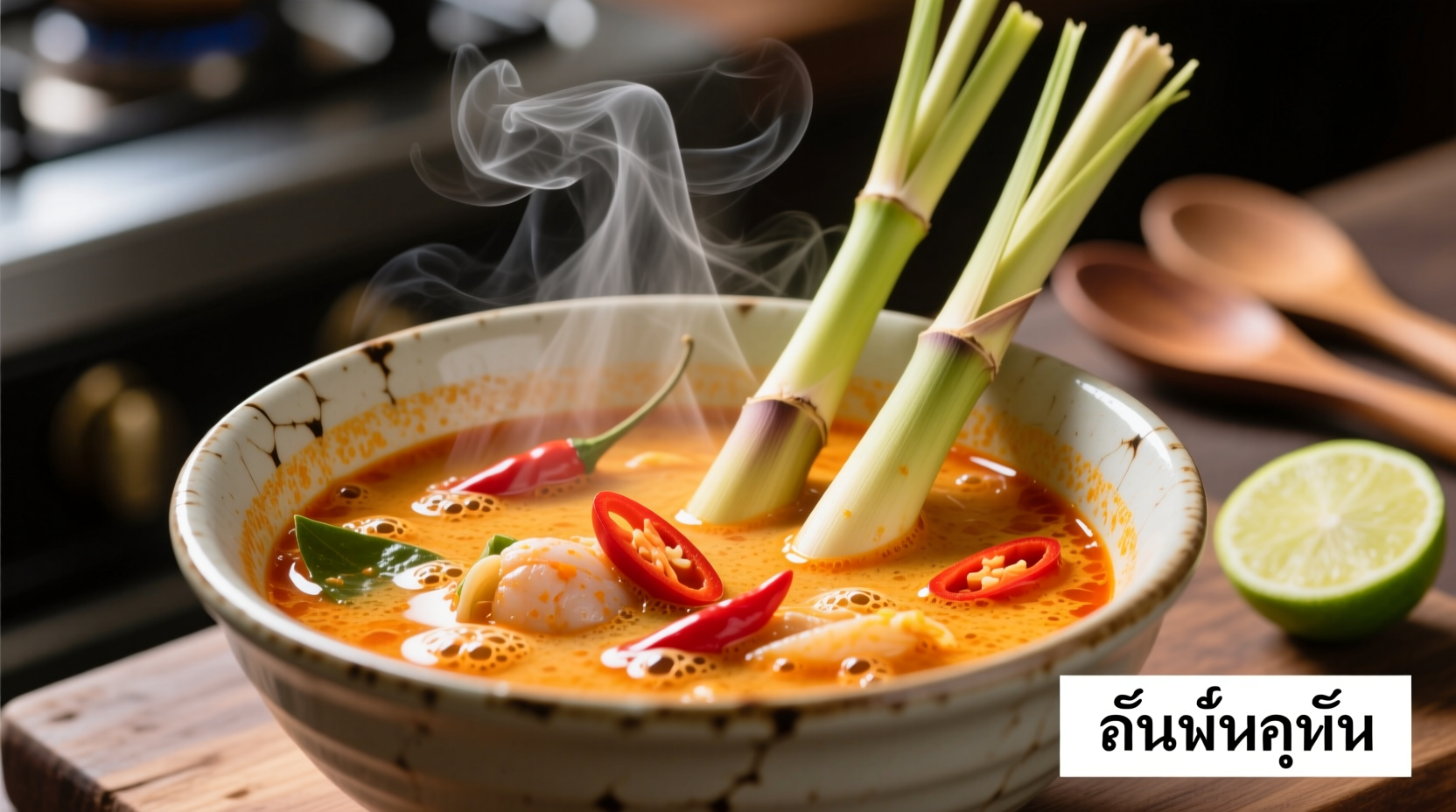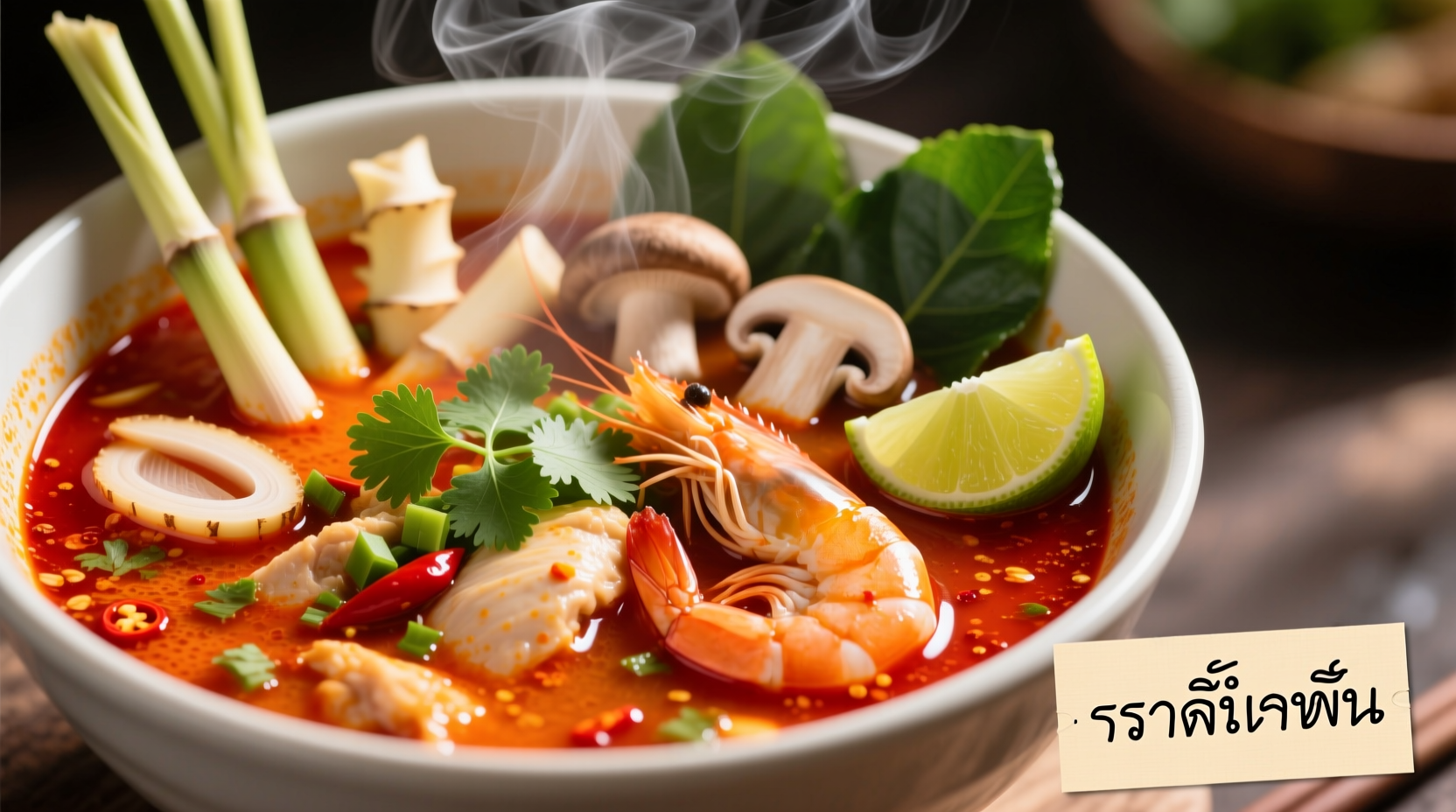Ever wondered what does tom yum taste like before trying this iconic Thai soup? You're about to discover exactly how its signature flavor profile hits your palate—and why millions worldwide keep coming back for more. This guide breaks down the complex taste experience into clear, relatable terms so you'll know precisely what to expect from your first spoonful.
The Five Elements That Define Tom Yum's Flavor Profile
Understanding what tom yum soup tastes like requires examining its five foundational taste components working in harmony:
- Sour: Fresh lime juice provides an immediate tangy punch that wakes up your taste buds
- Spicy: Bird's eye chilies deliver building heat that warms rather than overwhelms
- Salty/Umami: Fish sauce contributes savory depth without fishiness when properly balanced
- Herbal: Lemongrass, galangal, and kaffir lime leaves create complex aromatic notes
- Sweet (optional): Some regional variations include a touch of palm sugar for balance
Unlike Western soups that might emphasize creaminess or meatiness, tom yum flavor description centers on this dynamic interplay of bright, clean flavors that dance across your tongue rather than coat it.
How Key Ingredients Shape What Tom Yum Tastes Like
The distinctive taste of tom yum soup comes from specific Thai ingredients working together:
- Lemongrass: Citrusy aroma with subtle floral notes that forms the soup's backbone
- Galangal: Earthier, sharper cousin to ginger that adds peppery warmth (not interchangeable with ginger)
- Kaffir lime leaves: Intense citrus fragrance with pine-like undertones that's unmistakable in authentic tom yum
- Fresh chilies: Typically bird's eye chilies that provide gradual heat rather than instant burn
- Lime juice: Added at the end to preserve its bright acidity (not lemon juice)
- Fish sauce: Fermented anchovy-based seasoning that delivers umami without fish flavor
According to Thailand's Ministry of Culture documentation on traditional cuisine, the precise balance of these elements defines authentic tom yum, with regional variations reflecting local ingredient availability (Ministry of Culture, Thailand).
| Tom Yum Variation | Primary Flavor Difference | Key Ingredient Change |
|---|---|---|
| Tom Yum Goong (with shrimp) | Brighter, cleaner seafood-forward profile | Fresh shrimp heads/shells for natural sweetness |
| Tom Yum Nam Khon (creamy version) | Richer, milder with balanced heat | Coconut milk or evaporated milk added |
| Tom Yum Talay (seafood) | Complex oceanic notes with layered spice | Mixed seafood creates deeper umami base |
How Tom Yum's Flavor Has Evolved Over Time
The tom yum soup taste experience has transformed significantly since its origins:
- Pre-19th century: Simple herbal broth using available jungle ingredients with minimal spice
- Late 1800s: Introduction of bird's eye chilies from the Americas transformed it into today's spicy profile
- Mid-20th century: Standardization of the sour-spicy-herbal balance as Thailand promoted culinary tourism
- Present day: Global adaptations with regional tweaks while maintaining core flavor principles
Food historians at Chulalongkorn University note that authentic tom yum traditionally contained no added sugar—a practice that only emerged as restaurants catered to international palates (Thai Food and Drug Administration).
Tom Yum vs. Tom Kha: Understanding the Flavor Difference
Many confuse what tom yum tastes like with its cousin tom kha. Here's how they differ:
- Tom Yum: Clear broth, aggressively sour and spicy, herbal-forward, no coconut milk
- Tom Kha: Creamy coconut milk base, milder heat, pronounced sweetness, galangal-dominant
Think of tom yum as the bold, refreshing counterpart to tom kha's rich, comforting profile—similar to how lemonade contrasts with coconut water.
What to Expect When Trying Tom Yum for the First Time
Your first taste of tom yum typically unfolds in stages:
- Initial contact: Bright citrus aroma hits your senses before the first spoon
- First sip: Immediate sour tang followed by subtle herbal notes
- Mid-palate: Gradual warmth builds from the chilies (not instant burn)
- Finish: Clean, refreshing aftertaste with lingering lime and kaffir lime notes
- After 30 seconds: Gentle heat spreads through your body without discomfort
Unlike heavily spiced dishes that numb your palate, authentic tom yum leaves you refreshed and ready for another spoonful—which explains why Thais consider it both a meal and a digestive aid.

Regional Variations That Change Tom Yum's Flavor Profile
While Bangkok-style tom yum sets the global standard, regional versions offer distinct tom yum flavor variations:
- Central Thailand: Balanced sour-spicy profile with moderate heat
- Northern Thailand: Milder heat, more herbal with added local mushrooms
- Eastern Thailand: Intensified sourness reflecting coastal citrus availability
- Southern Thailand: Noticeable heat level with turmeric and shrimp paste notes
These regional differences demonstrate how what tom yum tastes like adapts to local ingredients while maintaining its essential flavor identity—a testament to Thai cuisine's regional diversity within a unified culinary framework.
Perfect Pairings: What to Eat With Tom Yum
Understanding tom yum soup flavor characteristics helps you pair it properly:
- With jasmine rice: Cuts the heat while absorbing flavorful broth
- With sticky rice: Traditional northeastern pairing that balances intensity
- With fried dishes: Contrasts rich textures with tom yum's clean profile
- Avoid heavy creams: Would clash with the soup's bright, clear flavors
Thai culinary tradition treats tom yum as both a standalone dish and a palate-cleansing accompaniment—never as a heavy meal starter.











 浙公网安备
33010002000092号
浙公网安备
33010002000092号 浙B2-20120091-4
浙B2-20120091-4